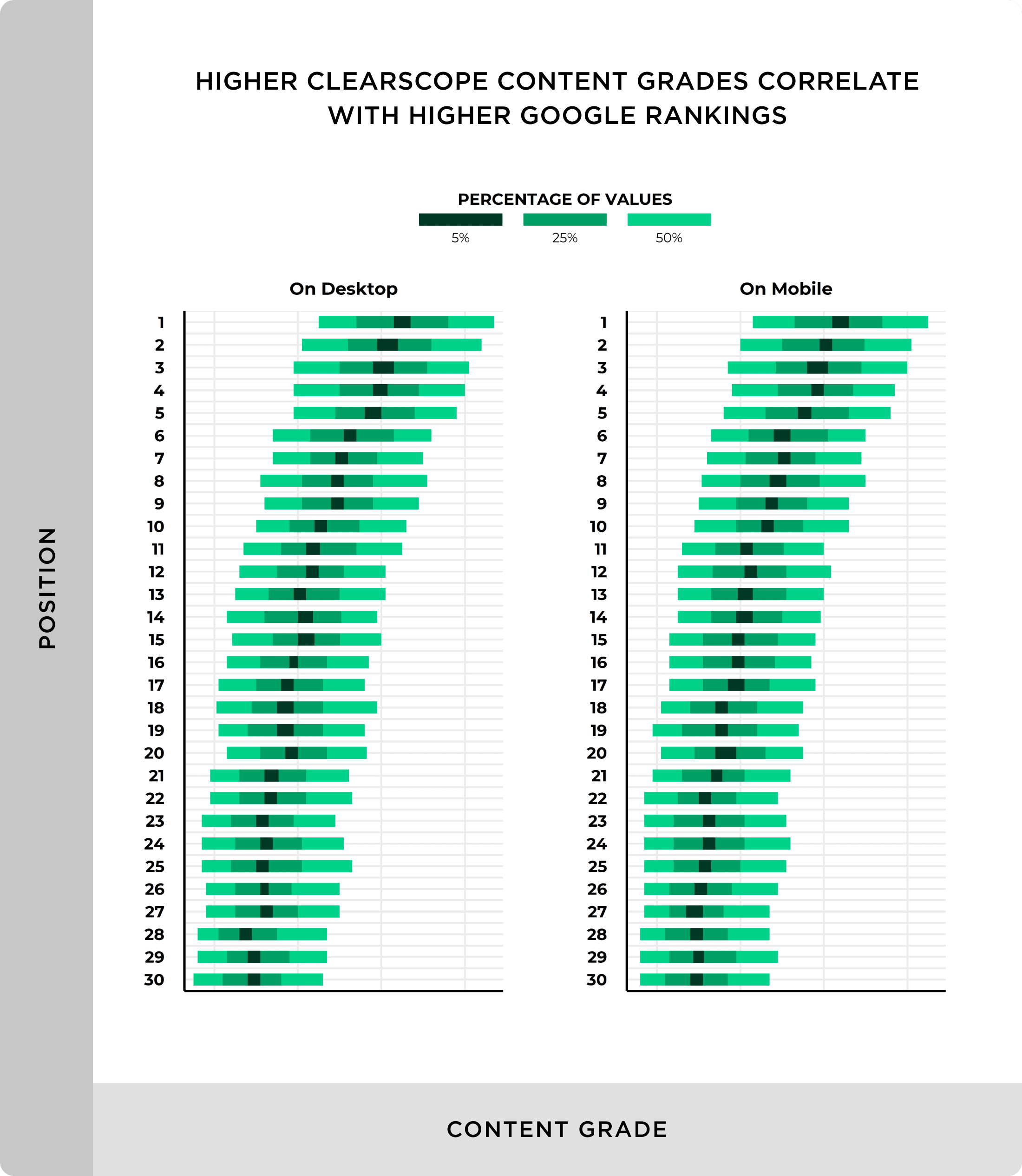Simple factors aren’t ranking signals because they don’t capture the full context and relevance of content. Google uses complex algorithms to ensure accuracy.
Search engine rankings rely on sophisticated algorithms rather than simple factors to provide the best user experience. These algorithms consider multiple elements like content quality, relevance, and user engagement. Simple factors, such as keyword density or meta tags, don’t sufficiently measure these aspects.
Google aims to deliver the most accurate and relevant results, which requires a nuanced understanding of web content. This complexity ensures that users find valuable and trustworthy information quickly. Therefore, relying solely on simple factors would undermine the quality of search results. Understanding this helps in creating content that performs well in search rankings.

Credit: backlinko.com
The Complexity Of Ranking Signals
Google uses many factors to rank websites. These factors are not simple. They involve complex algorithms and various signals. Understanding these can help improve your website’s SEO.
Beyond Simple Metrics
Some may think that keyword density is the key to ranking. This is not true. Google looks at many other metrics. These include:
- User experience: How users interact with your site.
- Page speed: How fast your page loads.
- Mobile-friendliness: How well your site works on mobile devices.
These metrics are vital for ranking. They go beyond simple keyword counts.
The Role Of Algorithms
Google’s algorithms are very advanced. They analyze many factors to rank pages. These algorithms are always changing. This keeps SEO experts on their toes.
Some key algorithms include:
| Algorithm | Purpose |
|---|---|
| Panda | Improves content quality. |
| Penguin | Reduces spammy links. |
| Hummingbird | Focuses on natural language queries. |
These algorithms help Google provide the best results. They ensure quality and relevance in search results.

Credit: www.searchenginejournal.com
User Intent And Context
Understanding why simple factors aren’t ranking signals involves exploring user intent and context. Google aims to deliver the most relevant results to each query. This means understanding the user’s needs and the context of their search.
Understanding User Queries
Google tries to understand what users want. This is known as user intent. There are three main types of user intent:
- Informational: Users want to learn something.
- Navigational: Users want to go to a specific site.
- Transactional: Users want to buy something.
Google uses advanced algorithms to detect these intents. Simple ranking factors like keyword density aren’t enough. Google looks deeper to understand the user’s true needs.
Contextual Relevance
Context is also crucial for ranking. Google considers various factors to provide relevant results:
| Factor | Description |
|---|---|
| Location | Where the user is searching from. |
| Search history | Previous searches can influence results. |
| Device | Results may vary for mobile vs. desktop. |
Google’s focus on contextual relevance means it delivers results tailored to each user. This way, a user in New York may see different results than one in London, even for the same query.
In summary, understanding user intent and contextual relevance is key for Google’s ranking. Simple factors like keyword density alone are not enough. Google looks at the bigger picture to serve users the best results.
Machine Learning In Rankings
Google’s ranking systems use machine learning to sort search results. Machine learning helps search engines adapt to new data. This process ensures the most relevant results appear first.
Adaptive Algorithms
Google’s algorithms are not static. They change and adapt over time. This adaptability comes from machine learning. Algorithms learn from user interactions. They then adjust to improve search results.
Consider these key aspects:
- Data Analysis: Algorithms analyze vast amounts of data.
- Pattern Recognition: They identify patterns in user behavior.
- Feedback Loops: Continuous feedback improves results.
Continuous Improvement
Machine learning enables continuous improvement in ranking systems. Algorithms receive constant updates. These updates fine-tune the search process.
Here’s how it works:
| Step | Action |
|---|---|
| 1 | Collect user data |
| 2 | Analyze search patterns |
| 3 | Update algorithms |
| 4 | Test new results |
Each update aims to improve accuracy. This ensures users find what they need quickly.
Machine learning also helps in understanding context. It considers the intent behind search queries. This leads to more precise results.
Content Quality And Relevance
Google has always emphasized the importance of content quality and relevance for ranking. Simple factors alone are not enough to secure top positions. High-quality content that is relevant to user queries plays a crucial role in search rankings. Let’s dive deeper into how Google evaluates content quality and relevance.
Evaluating Content Depth
Google values in-depth content. Content should cover all aspects of a topic. This means providing comprehensive information. Users should find answers to their questions. Detailed content is more likely to rank higher. It also earns more trust from users.
- Include detailed explanations.
- Use examples and case studies.
- Provide step-by-step guides.
- Answer common questions.
Depth is not about length. It’s about covering the topic thoroughly. Short but detailed content can rank high too.
Relevance Over Simplicity
Google prioritizes relevance over simplicity. Content must align with what users are searching for. This is more important than just being simple. Use relevant keywords naturally in your content.
- Identify what users are looking for.
- Match your content to those needs.
- Use user intent to guide your content creation.
Relevance involves understanding user intent. Write content that meets those specific needs. Google rewards content that is both relevant and valuable.
| Factor | Importance |
|---|---|
| Content Depth | High |
| Relevance | Very High |
In summary, focus on creating high-quality and relevant content. This will help your site rank better on Google.
Technical Seo Factors
Technical SEO factors play a crucial role in your website’s performance. Google emphasizes that simple factors aren’t direct ranking signals. Instead, technical elements like Page Speed and Mobile Friendliness significantly impact user experience and indirectly affect rankings.
Page Speed
Page Speed is vital for user experience. A faster website keeps users engaged. Slow loading times cause higher bounce rates. Google considers user experience in its ranking algorithm. Therefore, a quick-loading site is essential.
- Reduce image sizes
- Enable browser caching
- Use a content delivery network (CDN)
These steps help improve your page speed. Ensure your website loads within 3 seconds. Users love fast sites. So does Google.
Mobile Friendliness
Mobile Friendliness is more important than ever. Most users access websites via mobile devices. Google prioritizes mobile-friendly sites in its rankings. A responsive design adjusts to any screen size. This ensures a seamless user experience.
- Use a responsive design
- Optimize for touch navigation
- Ensure readable text without zooming
Follow these practices to make your site mobile-friendly. Google’s algorithm favors sites that cater to mobile users. This boosts your rankings significantly.
| Technical SEO Factor | Impact on SEO |
|---|---|
| Page Speed | Improves user experience, reduces bounce rates |
| Mobile Friendliness | Ensures accessibility across devices, enhances user satisfaction |
User Experience Signals
Google places great importance on user experience signals. These signals help determine how users interact with your website. They give insights into user satisfaction, engagement, and overall experience.
Engagement Metrics
Engagement metrics measure how actively users interact with your site. These metrics include:
- Time spent on page
- Number of pages visited
- Scroll depth
Google uses these metrics to evaluate the quality of your content. High engagement often indicates valuable and relevant content.
Bounce Rate
Bounce rate is the percentage of visitors who leave after viewing one page. A high bounce rate can signal poor user experience. It may indicate that visitors do not find your content useful or engaging.
To improve bounce rate, consider:
- Improving page load speed
- Enhancing content quality
- Making navigation easier
Remember, a lower bounce rate usually means better user engagement. This can lead to higher rankings on Google.
| Metric | Importance | Actionable Tips |
|---|---|---|
| Time Spent on Page | High | Create engaging content |
| Number of Pages Visited | Moderate | Improve internal linking |
| Bounce Rate | High | Optimize user experience |
Optimizing user experience signals can significantly impact your site’s ranking. Focus on creating valuable, engaging content for your users. This will lead to better user satisfaction and higher search rankings.
Evolving Seo Practices
Google’s ranking algorithms have transformed over the years. Simple factors like keywords are no longer enough. Modern SEO requires a more sophisticated approach. Let’s delve into the evolving practices that shape today’s SEO landscape.
Shifting Focus Areas
Search engines now prioritize user experience and content quality. Keywords and backlinks still matter, but they’re part of a bigger picture. User intent and content relevance have gained importance.
- User Experience: Fast-loading pages and mobile-friendliness are crucial.
- Content Quality: Unique, valuable content ranks higher.
- User Intent: Search engines understand and cater to what users seek.
These factors contribute to a more holistic SEO strategy. Focus on these areas to improve rankings effectively.
Importance Of Adaptability
SEO is a dynamic field. Strategies that worked last year may not work now. Adaptability is key to staying ahead.
- Stay Updated: Follow SEO news and Google updates.
- Experiment: Test different strategies to find what works.
- Analyze: Use tools to track performance and adjust tactics.
Adapting to changes ensures long-term success. Embrace new trends and technologies for a competitive edge.

Credit: backlinko.com
The Future Of Search Rankings
The future of search rankings is evolving rapidly. Google’s approach to ranking signals is shifting. Complex algorithms are replacing simple factors. This change aims to improve user experience. Let’s delve into this transformation.
Emerging Technologies
New technologies are shaping search rankings. Artificial Intelligence (AI) is at the forefront. Machine Learning (ML) helps in understanding user intent. Natural Language Processing (NLP) enhances content relevance.
| Technology | Impact on Search Rankings |
|---|---|
| Artificial Intelligence (AI) | Improves search result accuracy |
| Machine Learning (ML) | Understands user intent |
| Natural Language Processing (NLP) | Enhances content relevance |
Predictions And Trends
Future trends indicate a more personalized search experience. Voice search will grow in popularity. Users will ask natural questions. Visual search is another rising trend. Images and videos will play a bigger role.
- Personalized search results
- Increased voice search usage
- Growth of visual search
Predictive search will become more common. Google’s algorithms will anticipate user needs. This will lead to quicker and more relevant results.
Frequently Asked Questions
Why Aren’t Simple Factors Ranking Signals?
Simple factors can be easily manipulated, reducing the quality of search results. Google prefers complex signals to ensure relevancy.
What Are Complex Ranking Signals?
Complex ranking signals involve multiple elements like user behavior, content quality, and site authority. They provide a more accurate ranking.
How Does Google Ensure Relevancy?
Google uses advanced algorithms and machine learning to analyze complex signals. This helps deliver the most relevant results.
Do Simple Factors Affect Seo?
Simple factors like keywords still matter but are part of a larger system. They are not sole ranking signals.
Conclusion
Understanding Google’s stance on simple factors enriches your SEO strategy. Focus on comprehensive, quality content. Prioritize user experience and relevance. Staying updated with Google’s guidelines ensures better rankings. Implement these insights to enhance your website’s visibility and performance. Remember, SEO success lies in strategic, informed efforts.

